The Definitive Collector’s Guide to Marvel Trading Cards Through the Years
A collector's guide to the ins, outs, and joys of Marvel trading cards.
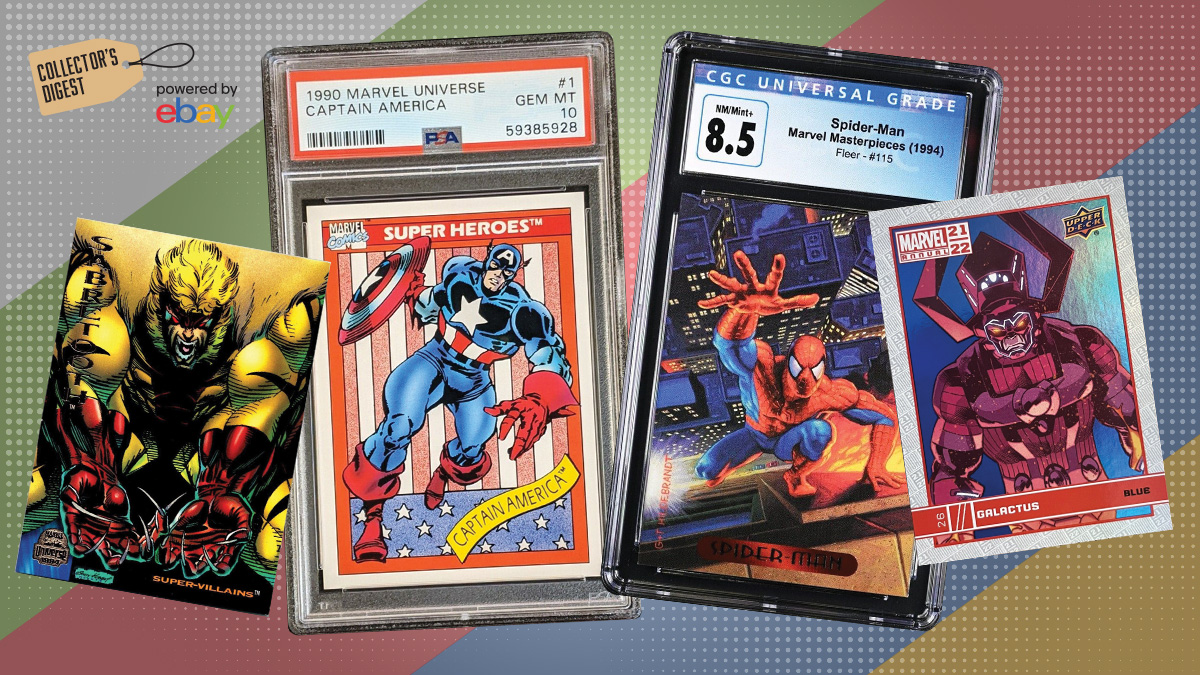
This article is part of our Collector’s Digest series powered by: 
For almost 35 years, Marvel lovers have had a different way of indulging their fandom than just voraciously reading the comics. In 1990, Impel released a set of licensed collectible cards featuring characters, battles, and key moments from throughout Marvel history (up to that point). Since then, not a year has gone by without more Marvel cards—some with exclusive art, some with special treatments like foiling, stamping, exclusive numbering, and holograms, and some with…questionable…art direction.
But fans have always snapped them up. And now, with the secondary market hotter than it has been in years, we present, in partnership with eBay, a brief history of some of the highest highs of Marvel collectible cards—both financially and artistically—and some of the lowest lows.
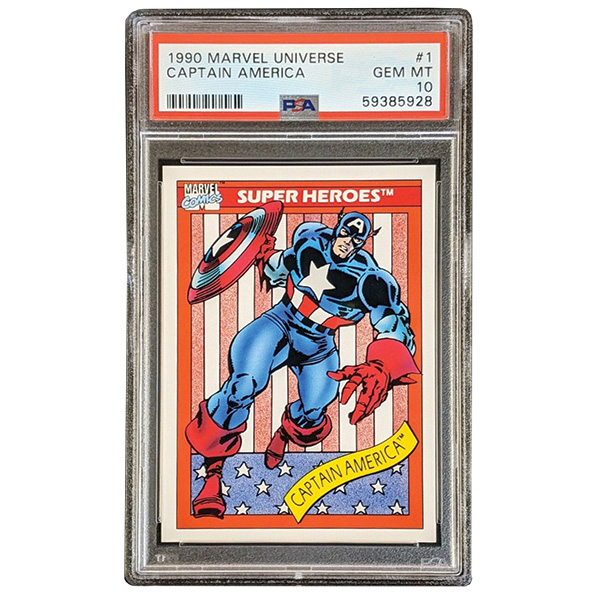
The Beginning
Like with most collectibles, firsts matter. In the trading card space, the first big Marvel set was 1990’s Impel Marvel Universe cards. The cards were built to feel like sports card knockoffs—each one usually had great art on the front, showing a character as they were in the comics at the time, representing an early appearance, or showing a team or a historic fight. And the backs inspired countless hours of schoolyard arguments: they had made up statistics about the characters like “Battles Fought,” “Win Percentage,” or “Wrinkles on Face” (poor Aunt May). Later sets would go further, adding relative power levels, but because of limitations posed by the scale, characters like Hulk and Galactus would end up presented as equally strong. Speaking as someone who was a preteen at the time, arguing about this stuff rocked.
And because this stuff rocked, these early sets—especially the Series 1 cards from 1990—have greatly increased in value. A gem mint Captain America Series 1 card will set you back $100+, and it might actually be a steal. A few have gone for four figures at auction. A mint Venom could fetch four times that. And the value of the hologram cards continue to soar. The set had 167 normal finish cards and five special holographic cards: Cosmic Spider-Man; Magneto; Silver Surfer; Peter Parker vs. Norman Osborn; and Wolverine. A hologram 7.0 grade Wolverine—decidedly not mint, though not too beat up—will still run you upwards of $65.
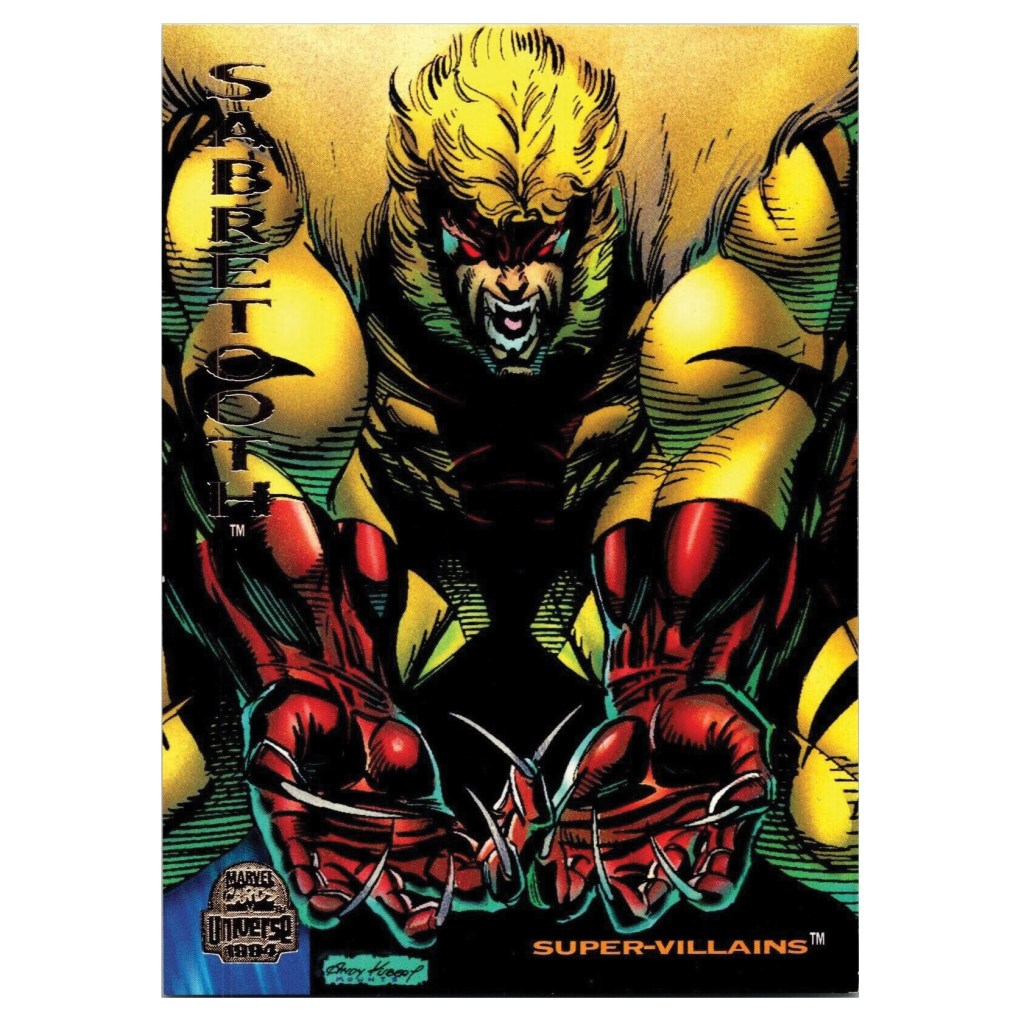
The Lows of the ‘90s
Let’s be clear: at no point have these cards ever had an actual, across-the-board downturn in quality. Marvel would frequently commission artwork from folks working on the comics to draw pinups that would be turned into these cards. So you would see Jim Lee’s X-Men team or Andy Kubert drawing Sabretooth. You also had, for the first time, the Hildebrandt brothers commissioned to paint artwork for the Marvel Masterpieces series of cards, and some of these cards are gorgeous.
BUT! Cards were not immune to the excesses of ‘90s comic culture. So the gimmicks came, and when they were bad, they were really bad.
Case in point: Spring Break 1995. Not the MTV Beach House celebrating the event. The X-Men cards celebrating the event. The Marvel Swimsuit Editions of the 1990s have been the subject of a deservedly large amount of ridicule over the years. And just as there is no logical reason for a book full of pinups of Gambit in a bikini bottom playing beach volleyball, there is also no reason for a card of Wolverine grilling sausages with his claws. Perhaps it’s not terribly surprising that you mostly can’t give these cards away. But they’d be amazing conversation pieces framed and on the wall—if you’re willing to go for it.
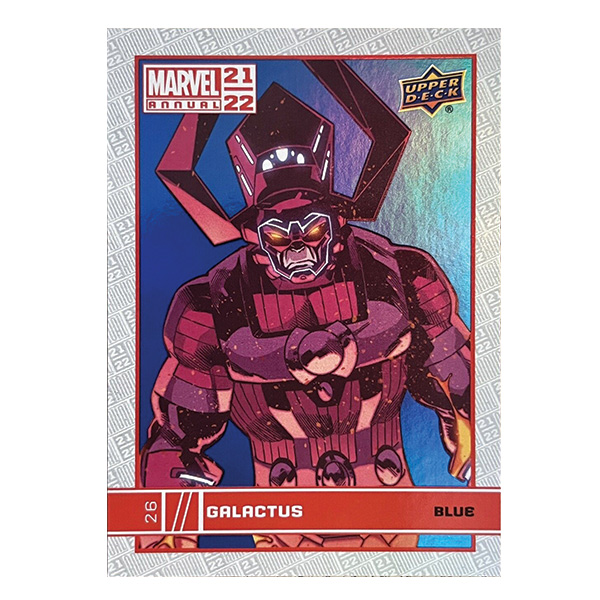
The Future
The ‘90s were fun and silly for trading cards, but recent years have seen them get interesting. Cards can do a lot of the same things that comics can do artistically, but because they’re small and cardboard, and not flimsy stapled pieces of paper, they can also try some interesting stuff—case in point: a ground floor buy in Upper Deck’s 2021 Galactus card. With the Fantastic Four on their way into the MCU, it’s only a matter of time before Galactus the Devourer makes his way to the big screen, which should drive up the value of any and all memorabilia associated with him. But this card is great for a much different reason.
Galactus was created by the greatest comic artist ever to work: Jack Kirby. He and Stan Lee introduced Galactus early in the Fantastic Four comics, and Kirby’s design was amazing. This giant was shimmering with power, Kirby crackle everywhere. Seeing him on page was intimidating and awe-inspiring. The foiling on this card feels like it was designed to give a similar effect—this is a being of immense cosmic power, and his look matches that.
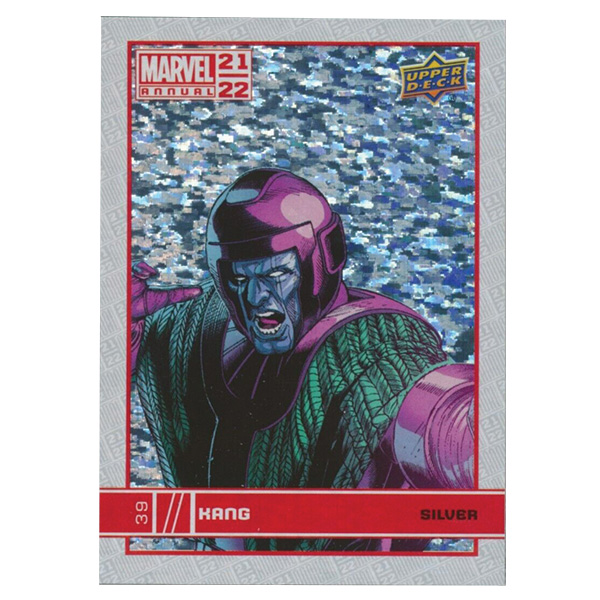
The 2022 Upper Deck Kang card has a similar foiling effect for a similarly weird character. Kang still promises to be the main driver of this latest phase of MCU movies, so the prices here should go up significantly, but the foiling on this art does the character justice, so whether that price moves or not, it’s still great to look at.
So while outside factors will determine which yet-to-be-released cards will spike in value, if you’re collecting to feed your fandom, what’s coming out now should keep you fat and happy for some time.
What You Need to Know to Start Collecting
Fausto Barrionuevo is a geek. We say this with the utmost respect: we are a veritable Den of them, after all. He, like most of us, got his start in nerdery early. “I was seven, and I came across something Silver Surfer,” he tells us. “And I was like, ‘This character is really cool,’ and I very quickly got a 1992 or ‘93 Marvel Universe card for the first time and read about the character. It [had] Ron Lim art on the front and the power ratings and bio on the back. The card taught me everything about the character.” From there, he set out to collect every Silver Surfer card made, and that eventually set him up in the position he’s in today—Senior Advisor and Marvel Card Expert for Certified Collectibles Group, the company that grades and preserves all sorts of collectibles, from trading cards to comics to stamps to pretty much anything one could collect. He is passionate about Marvel cards and collecting in general and was thrilled to share his knowledge and experience with new and old collectors alike.
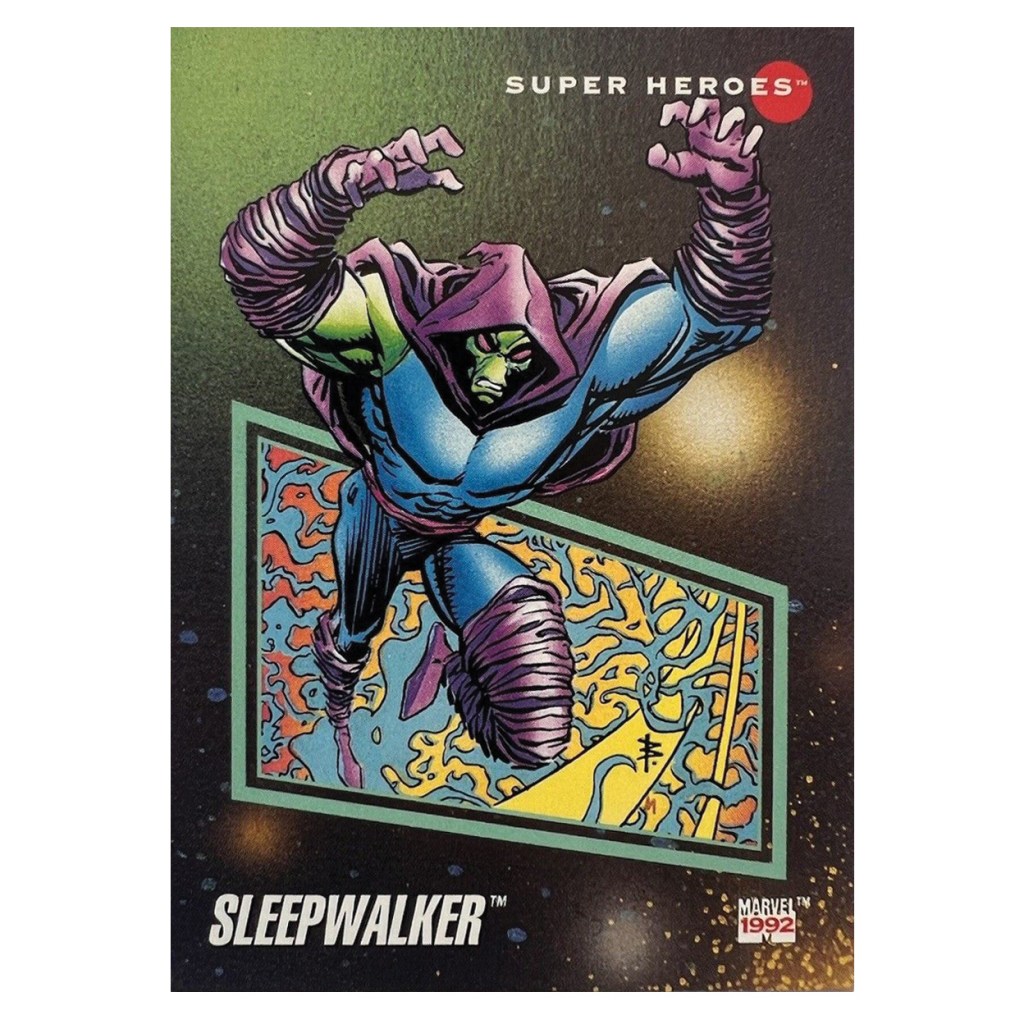
1. Valuing Cards
There are two ways of judging value when you’re starting your collection. “Rule number one.” Barrionuevo says. “If you love the card, it’s valuable to you.”
There are cards that are objectively valuable. The Sketchagraph cards from 1998’s Skybox Marvel Creator’s Collection set are obscenely valuable, but there was one chase card that could only be found if someone collected a set of them and mailed them off to a redemption center. They would receive in return a Spider-Man card, sketched by beloved artist Mike Wieringo, with Wieringo and Stan Lee’s autographs on the back. Only about 30 of those exist in the wild now. “That card is super coveted,” Barrionuevo tells us, “because it’s impossible to get.”
But there are cards that are personally valuable, too. “[The point of collecting] is to have pieces in your collection that either have some sentimental value or to keep track of the history of the thing,” he says. So Marvel’s Sleepwalker isn’t going to light the collector’s market on fire, even if, for some ridiculous reason, Marvel decides to make him the centerpiece of phase 8 of the MCU. But if you’re someone who enjoys the character, loves his design, and loves the stories he’s in, then you should grab as many cards as you can with Sleepwalker on them because people should rep what they love.
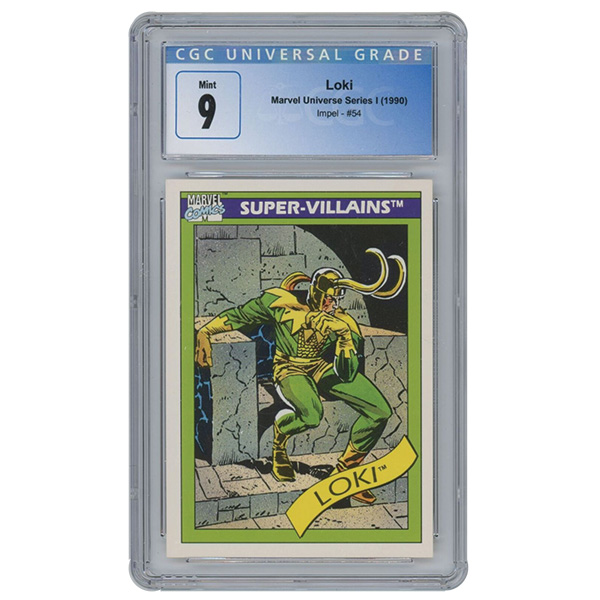
2. Priority Targets
That said, if you’re a new collector trying to pick out new items with long-term value, there is some useful guidance available.
Card companies do recognize the collectibility of their products now, and they design pieces of their sets with collectors in mind. “A lot of cards right now [have] parallels and variants, and sometimes they’re hard numbered,” Barrionuevo says. “So if you’d like one particular card, you could kind of find that card and a very low number and hunt for that”
There is also pop culture value. Sleepwalker isn’t likely to be in an MCU production, but if he ever is, expect a spike. Loki is one of Marvel’s oldest villains, the character who birthed the Avengers in-universe, and a mastermind behind several big event comics. But when it was announced that he got his own TV show, the value of relevant memorabilia (like those early Impel cards from the ‘90s) skyrocketed and then stabilized at a fairly high level.
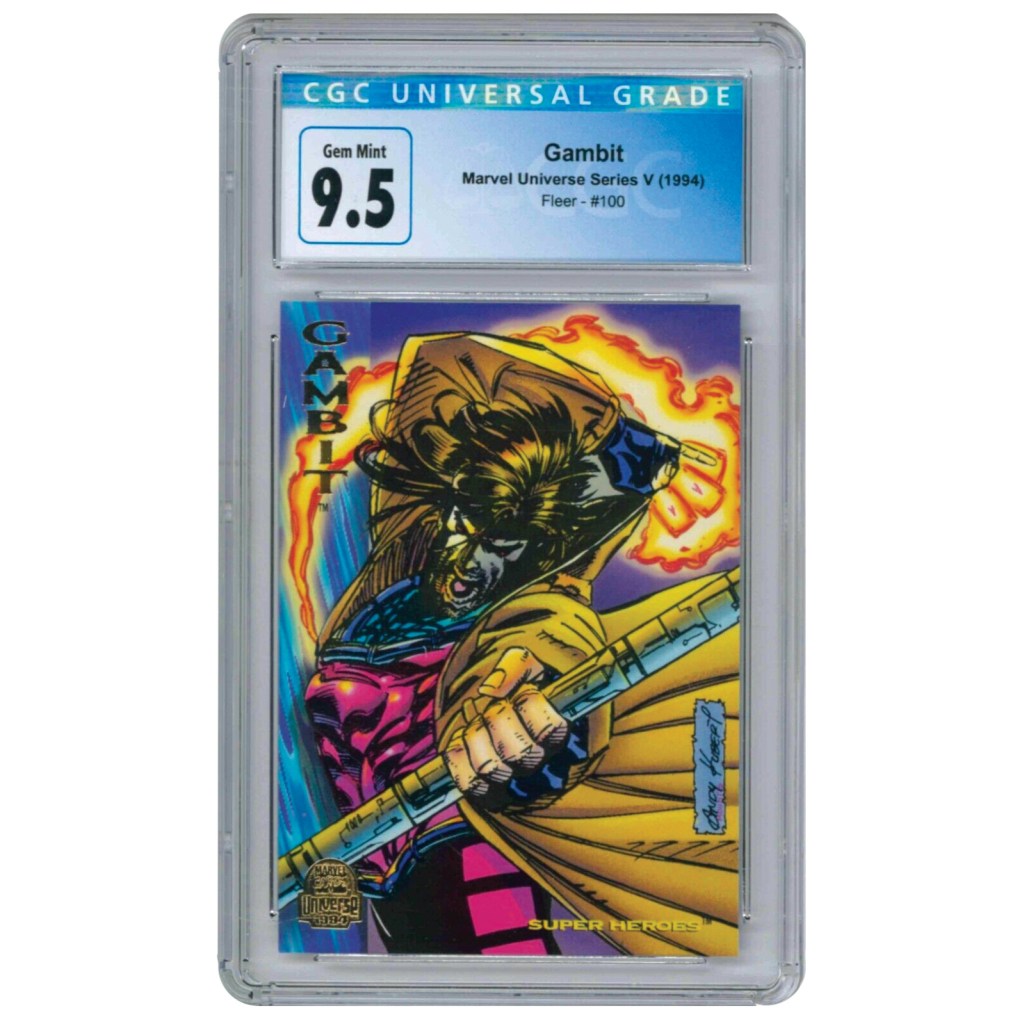
3. Protecting Your Collection
There are also cards that are graded. Barrionuevo’s team at CCG looks at the condition of cards, assigns them a number grade based on how well taken care of they are, and then locks them up in a hard plastic case to protect them from wear and the elements.
And a good distinction between graded cards and other memorabilia like comics is that graded cards are still usable. A graded comic is sealed away and can’t be used again—you need to have an extra copy if you want to read it. But a graded card can be displayed, and both front and back can still be seen.
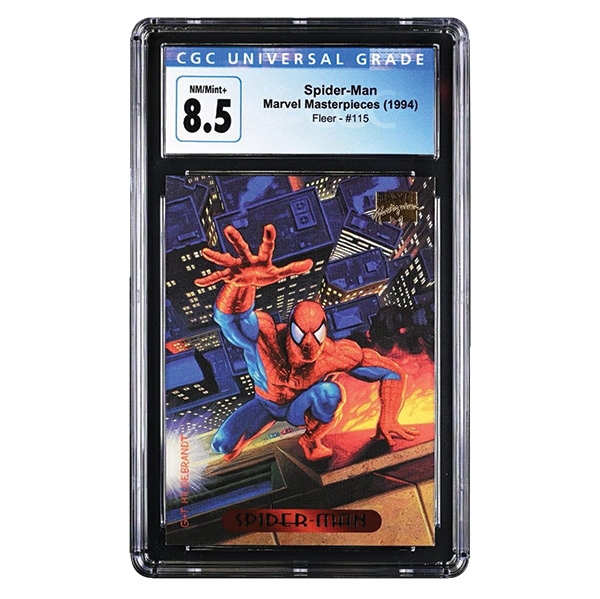
4. One Neat Trick to Collecting Marvel Cards
Ultimately, the most important thing you can do as a collector is to love what you’re collecting. There’s no special trick to it—if you’re in it for the money, there’s plenty of that to find, but it hollows out the experience. “These cards were designed by people who care about their jobs and want to do cool things,” he says. “When you’re a hobbyist, it’s about being part of the community.” It’s about sharing what you love with people who love the same things. That’s where the real value of collecting these cards comes from.
